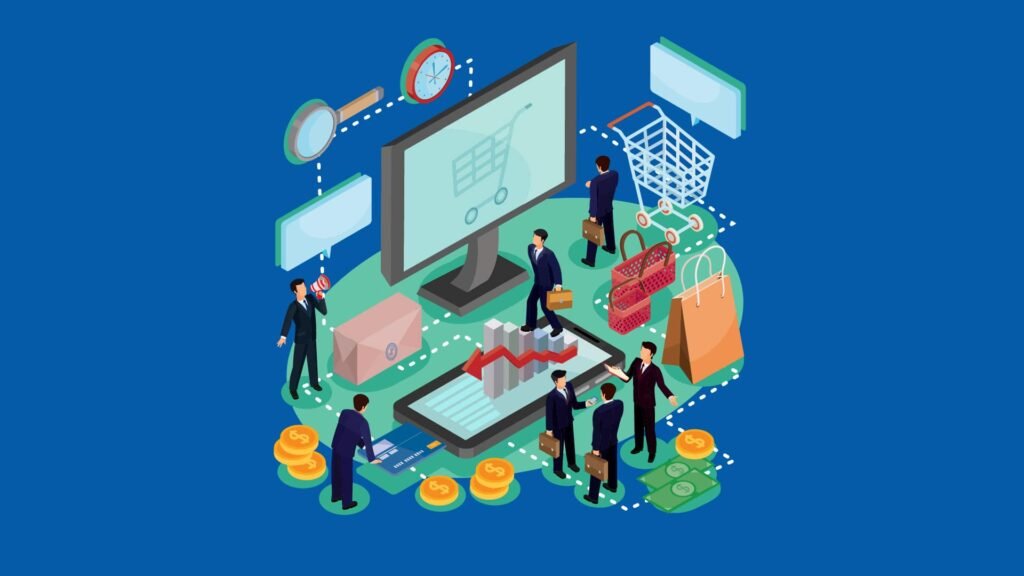Are you aware of the consumer buying process?
Too often, retailers believe that consumer purchases are random. that certain buyers are drawn to particular things, and that purchases either occur or they don’t. They use the same trial-and-error method for both product and service marketing. What if the majority of consumers followed a specific process before deciding whether or not to make a purchase? What if there was a scientific way to figure out what influences consumer decisions, making marketing to a target group more than just a wild guess?
The good news is that it really does and Marketing consulting experts are using these since long to assist their clients achieve success. The purchase itself constitutes only one stage; apart from that, there are five stages to the consumer buying process.
Stages of Consumer Buying / Decision Making Process
Making decisions is a cognitive process that leads to the choice of a plan of action from among multiple options. It entails weighing the benefits and risks of each potential course of action. Goals, values, and beliefs ultimately have an impact on how one makes decisions.
Consumers often go through five stages in the consumer buying process before making a purchasing decision:
1. Recognition of needs and wants
In the end, a sale happens when the customer discovers a solution to a problem they are having with a good or service. Consumers almost never buy goods and services merely for the sake of getting them; instead, they buy things when they can use them to solve problems and advance their goals.
Perception Is Everything
Make people aware of a problem that needs to be fixed before presenting your business and its solutions as the “perfect solution.”
In short, a potential customer will carry out their own problem identification study. For instance, a person may be identifying a desire for adventure or mobility if they feel like they need a new car. Consumers will go on to the information search stage of the consumer buying process if their need or desire for travel or adventure is high enough.
2. Information search
When a consumer is aware of their issue, the search for an appropriate solution starts. They are seeking anything or someone to assist them in resolving the problem since they are aware that it exists.
Focus on producing useful information that the potential customer may use to arrive at a decision about the goods or services you offer if you want to connect with them at this level. Inform customers that you provide services they haven’t thought of previously and target those who might conduct independent searches.
This is your best chance, as a marketer or business owner, to build your reputation as an industry leader or subject matter expert. For instance, during the information search stage, a customer might look up reviews online, talk to friends or family members, or explore other choices.
This stage enables the person to choose the following stage with greater knowledge.
3. Evaluation of alternatives
The consumer will likely know which product will address their problem at the end of this stage of the decision-making process, but they will first evaluate alternatives to their probable product or service of choice. In order to achieve this, it is typically compared to alternatives based on factors including quality, price, popularity, and reviews.
For instance, the customer will think about things like the advantages and disadvantages of each option as well as how each alternative fits with their own beliefs and objectives. This stage is crucial because it enables the decision-maker to select the next stage wisely.
4. Purchasing
The fourth stage of the consumer purchasing process is the actual purchase. Nowadays, the consumer choose which product or service to buy. The following elements are particular to the buying stage:
- Product’s need
- Benefits offered by the product
- Risk involved in the product
- Ability to pay
- Any social factors that might have an influence on a consumer’s choice
If all goes according to plan and your marketing efforts are successful, the consumer will decide to buy the good or service.
5. Post-purchase evaluation
The post-purchase evaluation is the final phase of the consumer purchasing cycle. The buyer evaluates their purchase after making it and contrasts it with their overall expectations. Either satisfaction or discontent results from this.
When a customer is happy with a purchase, their behavior usually reflects that happiness. They may:
- Choose to use company product’s once more in the future.
- Tell your family and friends about the business.
- Offer positive feedback
On the other hand, a disappointed customer might do the following:
- Expressing their grievances to the business.
- Expressing their displeasure to others
- Future refusal to do business with the company
- Post bad reviews or share false information about the business
If you are new in the business world trying to figure out various sales techniques. I’m, a Sales Consulting expert, is here to help you.
Get in touch for free consulting services.

